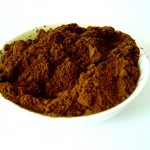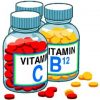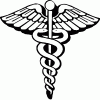The Medical Dangers of the Cinnamon Challenge

Swallow a tablespoon of ground cinnamon within 60 seconds without drinking any water. Sounds easy enough, but this feat has proven to be so difficult that it’s become an online fad amongst teens and the immature of all ages to record and post YouTube videos (50,000-plus) of people trying and failing miserably. The so-called Cinnamon Challenge, in fact, is so hard to accomplish that the website CinnamonChallenge.com declares it to be “practically impossible” (although the TV show Mythbusters showed it to be possible with a little strategy…and more than 60 seconds on the clock; see below). As it turns out, though, this seemingly harmless game is not only not easy, but it’s also not harmless.
The American Academy of Pediatrics recently released the results of a study on the dangers of the Cinnamon Challenge that should make you think twice about jumping on this bandwagon. Because cinnamon readily absorbs water, placing such a large amount in your mouth absorbs your saliva almost instantly, forming clumps that make it difficult to swallow and breathe and causing you to cough and vomit. If that’s not bad enough, inhaling cinnamon through the nose (a very real, if accidental, possibility with the Cinnamon Challenge) or exhaling it (just as likely) can cause nose and throat inflammation, chest tightness, nose bleeds and may even trigger pneumonia. Although the report couldn’t cite any studies of the effects that inhaling cinnamon has on people, it concluded that, given the spice is made up of cellulose fibers that do not dissolve or biodegrade in human lungs, there’s “a high likelihood” of the Cinnamon Challenge damaging one’s lungs. People with asthma, lung disease or allergies to cinnamon at a particularly high risk.
After the videos first began gaining notoriety online in 2010, the American Association of Poison Control Centers reported receiving 51 calls for help during 2011, a number that catapulted to 122 in just the first half of 2012. About 17% of the callers ended up requiring medical attention. In order to curb the disturbing trend before someone dies, the AAP report recommended that parents and doctors talk to children about the risks of this “harmless” fad.
(Sources: CinnamonChallenge.com, YouTube, The American Academy of Pediatrics, The Washington Post)







